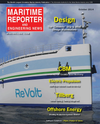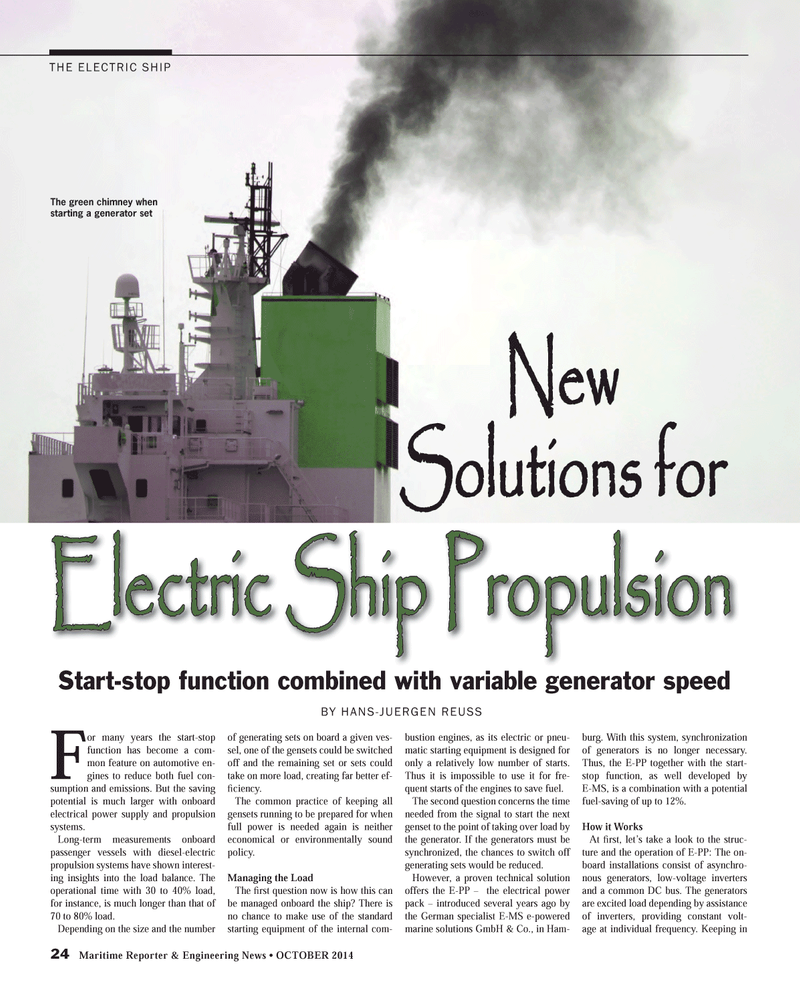
Page 24: of Maritime Reporter Magazine (October 2014)
Marine Design Edition
Read this page in Pdf, Flash or Html5 edition of October 2014 Maritime Reporter Magazine
24 Maritime Reporter & Engineering News • OCTOBER 2014
THE ELECTRIC SHIP
F or many years the start-stop function has become a com- mon feature on automotive en- gines to reduce both fuel con- sumption and emissions. But the saving potential is much larger with onboard electrical power supply and propulsion systems.
Long-term measurements onboard passenger vessels with diesel-electric propulsion systems have shown interest- ing insights into the load balance. The operational time with 30 to 40% load, for instance, is much longer than that of 70 to 80% load.
Depending on the size and the number of generating sets on board a given ves- sel, one of the gensets could be switched off and the remaining set or sets could take on more load, creating far better ef- fi ciency.
The common practice of keeping all gensets running to be prepared for when full power is needed again is neither economical or environmentally sound policy.
Managing the Load
The fi rst question now is how this can be managed onboard the ship? There is no chance to make use of the standard starting equipment of the internal com- bustion engines, as its electric or pneu- matic starting equipment is designed for only a relatively low number of starts.
Thus it is impossible to use it for fre- quent starts of the engines to save fuel.
The second question concerns the time needed from the signal to start the next genset to the point of taking over load by the generator. If the generators must be synchronized, the chances to switch off generating sets would be reduced.
However, a proven technical solution offers the E-PP – the electrical power pack – introduced several years ago by the German specialist E-MS e-powered marine solutions GmbH & Co., in Ham- burg. With this system, synchronization of generators is no longer necessary.
Thus, the E-PP together with the start- stop function, as well developed by
E-MS, is a combination with a potential fuel-saving of up to 12%.
How it Works
At fi rst, let’s take a look to the struc- ture and the operation of E-PP: The on- board installations consist of asynchro- nous generators, low-voltage inverters and a common DC bus. The generators are excited load depending by assistance of inverters, providing constant volt- age at individual frequency. Keeping in
Electric Ship Propulsion
New
Solutions for
The green chimney when starting a generator set
Start-stop function combined with variable generator speed
BY HANS-JUERGEN REUSS
MR #10 (18-25).indd 24 10/1/2014 9:37:14 AM

 23
23

 25
25
